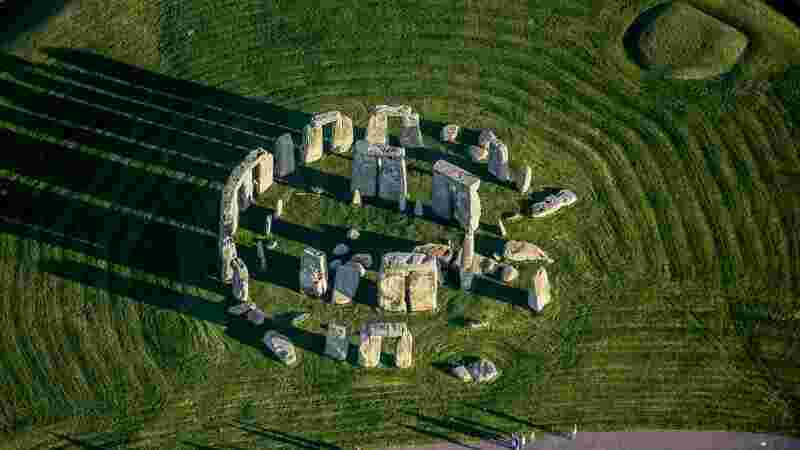Stonehenge's Altar Stone: A 435-Mile Journey from Scotland
A new study published in the journal Nature has revealed that the Altar Stone, the largest of the bluestones used in Stonehenge, was transported over 435 miles (700 kilometers) from northeastern Scotland nearly 5,000 years ago. This discovery overturns a century-old theory that the stone originated in Wales.
The Altar Stone, weighing a massive 13,227 pounds (6 metric tons), lies at the heart of the Stonehenge circle. "This stone has travelled an awful long way—at least 700 km—and this is the longest recorded journey for any stone used in a monument at that period," stated study coauthor Nick Pearce, a professor at Aberystwyth University in Wales.
This discovery sheds light on the advanced capabilities of ancient Britons, suggesting they possessed the knowledge and resources to move massive stones, potentially via maritime means.
The study's authors, using chemical analysis of the Altar Stone, identified zircon, apatite, and rutile grains. While the zircon dated back 1 to 2 billion years, the apatite and rutile grains were aged between 458 million and 470 million years old. This "chemical fingerprint" matched the Old Red Sandstone found in the Orcadian Basin in northeastern Scotland, conclusively ruling out Wales as the origin.
"The findings raise fascinating questions, considering the technological constraints of the Neolithic era, as to how such a massive stone was transported over vast distances around 2600 BC," said lead study author Anthony Clarke, a doctoral student from Curtin University.
This revelation presents a significant challenge to understanding the logistical feats of the Neolithic period, prompting speculation about a potential marine route along the British coast.
The discovery also highlights a higher level of societal organization than previously understood. "Transporting such massive cargo overland from Scotland to southern England would have been extremely challenging, indicating a likely marine shipping route along the coast of Britain," said study coauthor Chris Kirkland, a professor at Curtin University.
While the discovery of the Altar Stone's origin solves a long-standing mystery, it also opens new avenues of exploration. "It’s thrilling to know that our chemical analysis and dating work has finally unlocked this great mystery," said study coauthor Richard Bevins, an honorary professor at Aberystwyth University. However, the search continues to pinpoint the exact location in northeast Scotland from which the Altar Stone was sourced.
The discovery further emphasizes the potential for advanced trade networks and sophisticated maritime practices during the Neolithic period. While the exact purpose of the Altar Stone remains unclear, its journey underscores the remarkable capabilities and organizational skills of ancient Britons.
"While it seems incredible, Stonehenge is itself an incredible monument," remarked Joshua Pollard, a professor of archaeology at the University of Southampton, who was not involved in the study. "Increasingly it looks as though the stones are drawn from sources ancestral to those who created Stonehenge—it kind of condenses historic lineage stories in one place."
As the study concludes, the enduring mystery of Stonehenge's purpose continues, but the unveiling of the Altar Stone's origin serves as a powerful reminder of the ingenuity and connectivity of past civilizations.
Century-old theory of where Stonehenge’s Altar Stone came from overturned by new study
The iconic Altar Stone at the center of Stonehenge in southern England was likely moved over hundreds of miles nearly 5,000 years ago, according to new research.


